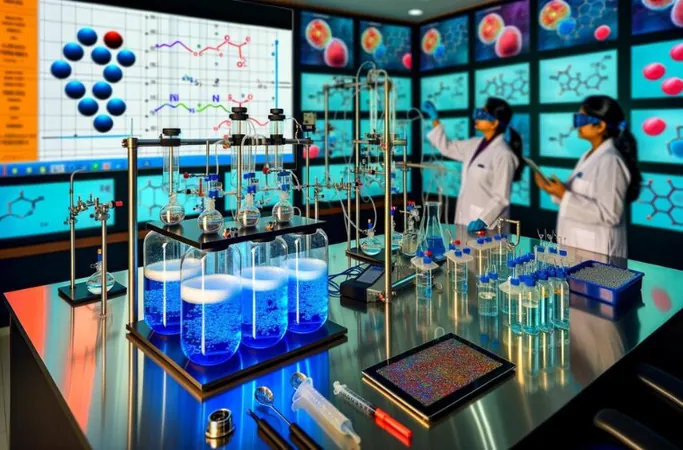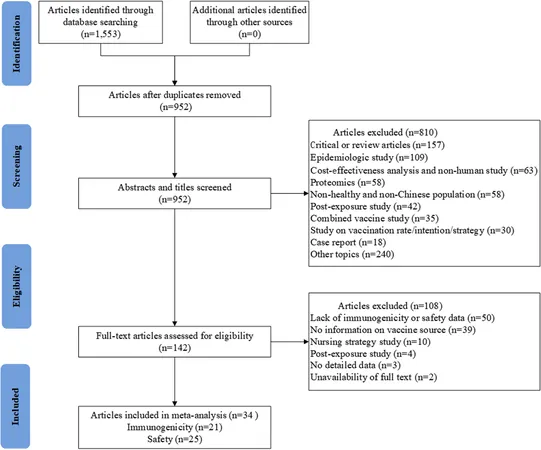
Revolutionizing Sustainable Fuels: Breakthroughs in Acidic CO2 Reduction Technology
2025-01-06
Author: Siti
Introduction
As the climate crisis intensifies, the urgency for innovative methods to convert carbon dioxide (CO2) into valuable chemicals and fuels has never been more critical. Industries worldwide face the formidable task of reducing carbon emissions while transitioning to renewable energy sources. In this context, electrocatalytic CO2 reduction (CO2RR) emerges as a beacon of hope, especially when utilized in acidic environments, which offer significant advantages over traditional alkaline systems.
Why Acidic CO2 Reduction is a Game Changer
Acidic conditions can enhance carbon efficiency by drastically reducing the production of bicarbonate, a byproduct that hampers CO2 utilization in alkaline systems. This shift not only boosts efficiency but also enhances operational stability, making it an attractive option for industrial applications. By harnessing renewable electricity, acidic CO2 reduction can convert CO2 into a wide array of valuable products, ranging from simple hydrocarbons to more complex multi-carbon chemicals.
However, while the benefits are apparent, several challenges must be addressed to fully realize its potential. A significant hurdle is the competition from the hydrogen evolution reaction (HER) that occurs under acidic conditions, diminishing the selectivity for CO2 reduction products and leading to inefficiencies. Additionally, the corrosiveness of acidic environments can threaten the stability of electrocatalysts and the overall system, which is critical for sustained operations.
Innovative Solutions at Play
Researchers are actively developing advanced catalysts that can selectively facilitate CO2 reduction while suppressing HER, requiring an intricate balance in optimizing the catalysts' electronic structure for enhanced CO2 interactions. Incorporating proton exchange membranes (PEM) into systems can significantly boost proton conductivity and stability, crucial factors in maintaining the longevity and efficiency of the reaction process.
The Catalyst Revolution: Cutting-Edge Designs
Electrocatalysts are vital to the success of CO2 reduction, and innovative designs are unlocking new possibilities. For instance, bimetallic catalysts have shown exceptional promise, fostering ideal conditions for CO2 adsorption while limiting hydrogen production. Furthermore, tailoring the surface chemistry of these catalysts can create specific microenvironments that stabilize reaction intermediates, drastically improving overall efficiency. This approach is pivotal in overcoming the inherent challenges of acidic environments.
Transforming Electrodes and Electrolytes for Greater Efficiency
Moreover, advancements in electrode design and electrolyte selection are crucial for enhancing acidic CO2 reduction. The development of gas diffusion electrodes (GDE) integrated with membrane electrode assemblies (MEA) represents a significant leap towards optimized gas-to-liquid conversion processes. These cutting-edge configurations dramatically improve mass transfer and reduce resistance, thereby elevating the efficiency of CO2 conversion.
Moreover, experimenting with electrolyte composition—including the introduction of larger cations—can improve CO2RR activity and selectivity, streamlining the pathway from laboratory innovations to scalable industrial solutions.
Towards a Sustainable Industrial Future
The implications of acidic CO2RR extend profoundly into the industrial sector. As businesses strive to minimize their carbon footprint, integrating technologies that transform waste CO2 into marketable products is garnering widespread attention. However, scaling these innovations requires overcoming substantial technical and economic barriers.
Future research priorities should focus on enhancing catalyst durability in acidic settings and developing scalable electrolysis systems. Moreover, refining reactor designs to bolster single-pass CO2 conversion efficiency is vital for real-world application. Addressing these challenges is essential for cementing acidic CO2 reduction as a cornerstone in the push for sustainable industrial practices.
A Promising Path Ahead: Merging Efficiency with Sustainability
Ultimately, the ambitious goal of CO2 reduction technology is to harmonize efficiency with sustainability. Acidic electrocatalytic CO2 reduction provides a tangible means to accomplish this, converting harmful greenhouse gases into economically viable products while leveraging renewable energy sources. As research evolves, incorporating acidic CO2RR into broader industrial frameworks may play a critical role in the global effort to combat climate change.
Collaboration among researchers, industry stakeholders, and regulatory bodies is vital as we take steps towards a promising future in CO2 reduction technologies. With unified efforts, acidic electrocatalytic CO2 reduction could soon become a pivotal player in shaping a sustainable and carbon-neutral future, aligning with the global agenda for environmental preservation and energy transformation. The time has come to embrace the innovations that can redefine how we perceive and utilize CO2—as a resource instead of a waste.




 Brasil (PT)
Brasil (PT)
 Canada (EN)
Canada (EN)
 Chile (ES)
Chile (ES)
 Česko (CS)
Česko (CS)
 대한민국 (KO)
대한민국 (KO)
 España (ES)
España (ES)
 France (FR)
France (FR)
 Hong Kong (EN)
Hong Kong (EN)
 Italia (IT)
Italia (IT)
 日本 (JA)
日本 (JA)
 Magyarország (HU)
Magyarország (HU)
 Norge (NO)
Norge (NO)
 Polska (PL)
Polska (PL)
 Schweiz (DE)
Schweiz (DE)
 Singapore (EN)
Singapore (EN)
 Sverige (SV)
Sverige (SV)
 Suomi (FI)
Suomi (FI)
 Türkiye (TR)
Türkiye (TR)
 الإمارات العربية المتحدة (AR)
الإمارات العربية المتحدة (AR)